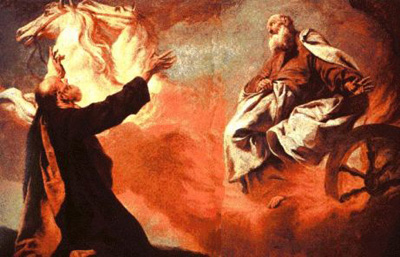According to this Jerusalem Post report, the site where Jesus was baptised will be opened to the public in 10 days’ time, on January 18, 2011. See also Todd Bolen’s report here.
When we tried to visit the site last year, following the signs for Qasr el-Yahud, we found that the road was blocked by a military fence and gate.


There was a sign which we ignored because we didn’t understand what “photgraphy” was!

It will be wonderful to visit this site, which has been off-limits for 42 years. The site where Jesus was baptised is called Bethabara in John 1.28. The Hebrew name Bethabara means the “Place of Crossing”. Not only was it a suitable place where travellers crossed the River Jordan opposite Jericho, but the name also indicates that it was the place where the Israelites crossed over into the Promised Land after the death of Moses.

The crossing of the Jordan is described in Joshua 3.15,16 (quotes from ESV):
“as soon as those bearing the ark had come as far as the Jordan, and the feet of the priests bearing the ark were dipped in the brink of the water (now the Jordan overflows all its banks othroughout the time of harvest), the waters coming down from above stood and rose up in a heap very far away, at Adam, the city that is beside Zarethan, and those flowing down toward the Sea of the Arabah, the Salt Sea, were completely cut off. And the people passed over opposite Jericho.”

Bethabara played an important role in the life of Jesus, as he returned there many times after his baptism. He went there, for example, after his rejection in Jerusalem during Hanukkah, the Feast of Dedication, “He went away again beyond Jordan into the place where John at first baptized; and there he abode.” (John 10.40). “Beyond Jordan” is, of course, also the place where the Camp of Israel was located just before they entered the Promised Land! Undoubtedly this site had a strong impact on the mind of Jesus as he would have been very familiar with the Biblical events that took place there.
After Jesus was baptised, he was tempted in the wilderness nearby. He used the words of Deuteronomy to counter the temptations of the devil. Moses wrote the Book of Deuteronomy while Israel was encamped “beyond Jordan” (Deut. 31.9).

After the crossing, Joshua commanded to take out 12 stones and place them in the next camping place, Gilgal: “these stones shall be for a memorial unto the children of Israel for ever” (Joshua 4.7). As John was baptising here, he probably referred to these 12 stones when he said: “God is able of these stones to raise up children unto Abraham” (Matthew 3.9).
Bethabara features again in the book of Judges. To complete his victory over the Midianites, Gideon:
“sent messengers throughout all the hill country of Ephraim, saying, “Come down against the Midianites and capture the waters against them, as far as Beth-barah, and also the Jordan.” So all the men of Ephraim were called out, and they captured the waters as far as Beth-barah, and also the Jordan. And they captured the two princes of Midian, Oreb and Zeeb.” (Judges 7.24,25).
This victory is reflected in a psalm when David longed for the victory over Israel’s future enemies “Make their nobles like Oreb and Zeeb”, looking forward to a time when their adversaries would be confounded forever (Psalm 83.11,18).
And there are still further references in Scripture to Bethabara: During the rebellion of Absalom, King David crossed here and returned later via the same crossing place:
“So the king came back to the Jordan, and Judah came to Gilgal to meet the king and to bring the king over the Jordan. ” (2 Samuel 19.15).
Bethabara is also the place where Elijah and Elisha went after leaving Jericho. There “Elijah went up by a whirlwind into heaven” (2 Kings 2.11).

A visit to this site will be a valuable addition to any tour of the Land. Needless to say, such a visit would be greatly enriched if it is with “Bible in hand”, in order to reflect on all the significant events that took place here. Hopefully I will be able to see the place from the other side, when I visit Tall el-Hammam in Jordan.


